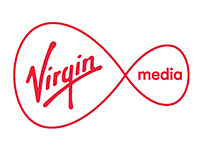03
Apr
These days, everything is going mobile, in one way or another; our mobile phones have become a vital part of our lives. In 2009, half a billion people accessed mobile internet worldwide in 2009 and usage is expected to double within five years as mobile overtakes the PC as the most popular way to get on the web, Mobi Thinking states. “In the last twelve months, customers around the world have ordered more than US$1 billion of products from Amazon using a mobile device,” – Jeff Bezos, founder and CEO of Amazon.com stated in July 2010. Growth is being seen in mobile payment processors as the demand to use our mobiles more continues and the big players like Google and Apple aim to enter the field.
Here we take a look at The Mobile Payment Processing Market (m-Commerce, m-Ticketing, m-Coupons):
Embed This Infographic:

Mobile Payments InfographicPromotional Codes
As mobile payment processors continue to develop, the search engine giant Google has begun to work with MasterCard, Citigroup and VeriFone to produce a contactless mobile device which has the soul aim of speeding up transactions at the checkout, according to VSR. The technology would work through a mobile application designed for Google’s Android operating system.
While Google have already started their plans, there are rumours afoot that Apple are going to be testing the water too. If reports are to be believed, the iPhone 5 may include NFC technology, which lets people use their phones to pay for items wirelessly after all, Forbes reports. Apparently people in the NFC space still expect Apple to come out with NFC on the iPhone 5. NFC is a technology that lets you use your phone as your wallet and pay for things wirelessly from your phone at the check-out counter.
As the growth continues, it is believed that by 2014, 50 percent of the world’s mobile subscribers could be paying by mobile (m-payments) by 2014. While Japan sets the precedent for m-payment – 10 percent of Japanese mobile subscribers paid by mobile in December alone. While M-commerce is predicted to reach US$119 billion in 2015, with Japan remaining on top. Top m-commerce retailers globally include: Taobao, Amazon and eBay – on eBay alone consumers bought and sold over US$2 billion worth of merchandise via mobile in 2010. Then when it comes to M-ticketing that will be used by more than 1 in 10 mobile subscribers in 2014, particularly in the transport sector.
In fact, being mobiles has become such a part of our lives, Gartner predicted that in 2012, these will be the top ten uses:
- Money transfer
- Location-based services
- Mobile search
- Mobile browsing
- Mobile health monitoring
- Mobile payment
- Near-field-communication services
- Mobile advertising
- Mobile instant messaging
- Mobile music
In a further development on the technology, the UN World Food Programme planned to use a mobile voucher scheme to feed thousands of refugees. In 2009, one thousand Iraqi refugee families in Damascus received a voucher by SMS every two months that could be cashed in at Syrian state shops for food, including rice, wheat flour, lentils, chickpeas, oil, canned fish, cheese and eggs – fresh food can’t usually be included in conventional aid baskets. Now the scheme is being rolled out to refugees outside the Syrian capital, covering 9,600 families.
As the years progress, the growth of mobile payment processors is going to be significant as we further see the rollout of M-commerce, M-ticketing and M-coupons.











Leave a Response